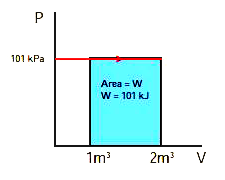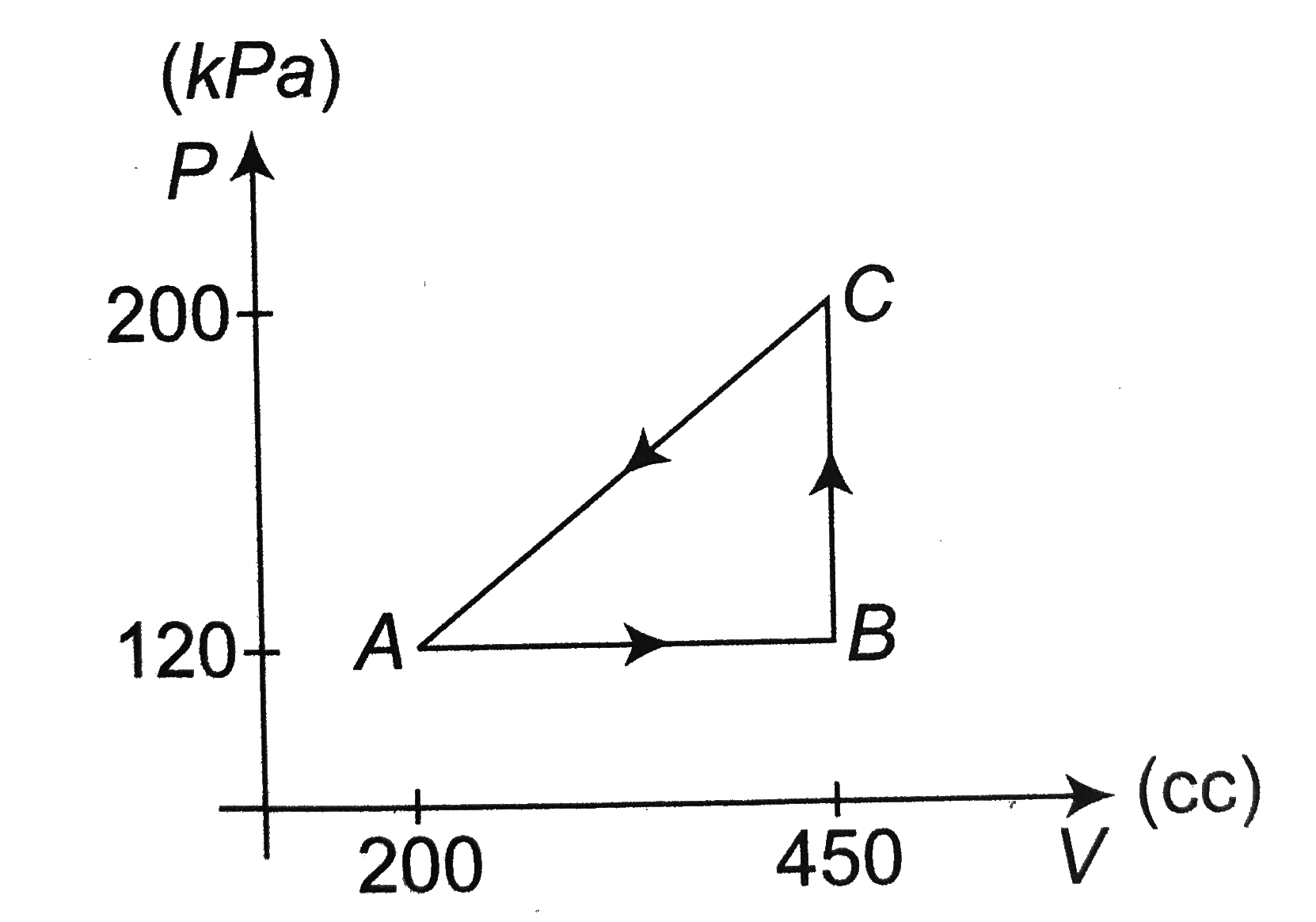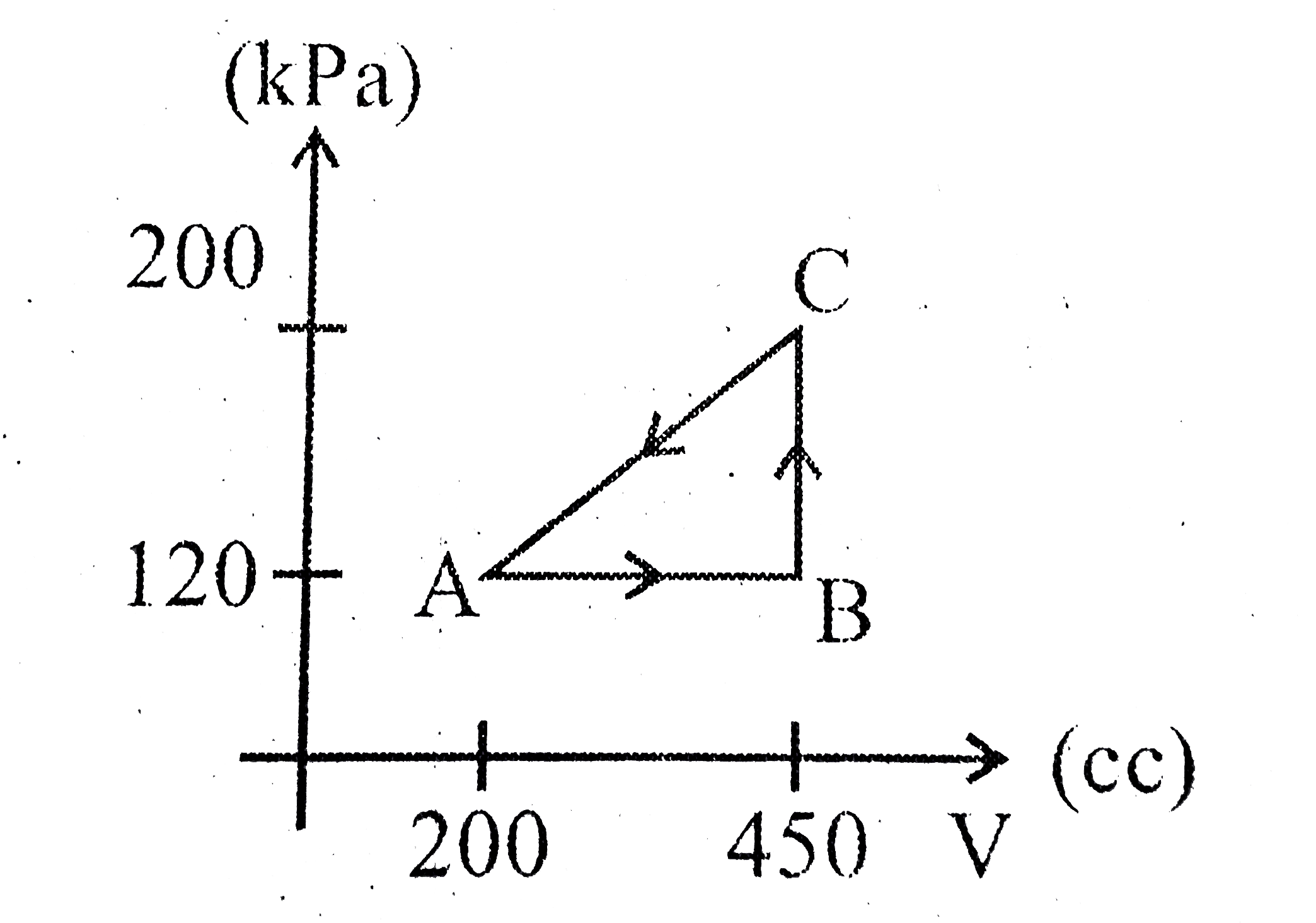A gas expands from volume to at constant atmospheric pressure.
(a) Calculate the work done by the gas.
(b) Represent the work done in PV diagram.
Text Solution
(a) The pressure ,
From equation
Since P is constant. It is taken out of the integral.
(b) Since the pressure is kept constant, PV diagram is straight line as shown in the figure. The area is equal to work done by the gas.

Note the arrow mark in the curve. Suppose the work is done on the system, then volume will decreases and the arrow will point in the opposite direction.
|
Topper's Solved these Questions
- HEAT AND THERMODYNAMICSBOOK - NCERT TAMILCHAPTER - HEAT AND THERMODYNAMICSEXERCISE - EVALUATION (MULTIPLE CHOICE QUESTIONS)
15 Videos
- HEAT AND THERMODYNAMICSBOOK - NCERT TAMILCHAPTER - HEAT AND THERMODYNAMICSEXERCISE - EVALUATION (Numerical Problems)
13 Videos
- GRAVITATIONBOOK - NCERT TAMILCHAPTER - GRAVITATIONEXERCISE - ADDITIONAL EXERCISES
4 Videos
- KINEMATICSBOOK - NCERT TAMILCHAPTER - KINEMATICSEXERCISE - EXERCISE (IV. Exercises )
20 Videos
Similar Questions
Knowledge Check
Calculate the work done by the gas in the state diagram shown.
 A30JB20JC−20JD−10J
A30JB20JC−20JD−10JA gas expands from a volume of 1m3 to a volume of 2m3 against an external pressure of 105Nm−2. The work done of the gas will be
A105kJB102kJC102JD103JA gas expands from a volume of 1m3 to a volume of 2m3 against an external pressure of 105Nm−2. The work done of the gas will be
A105kJB102kJC102JD103J
One mole of an ideal gas is expanded from a volume of 3L to 5L under a constant pressure of 1 atm. Calculate the work done by the gas.
View SolutionA gas expands from 2m3 to 2.5m3 at constant pressure 103 pa, the work done is
View SolutionIf a gas expands through a volume of 100mL against atmospheric pressure, the work done by the gas =…................ joule .
View SolutionA gas expands from 2m3 to 2.5m3 at constant pressure 103 pa, the work done is
View SolutionA gas expands in volume from 2L to 5L against a pressure of 1 atm at constant temperature. The work done by the gas will be
View Solution

